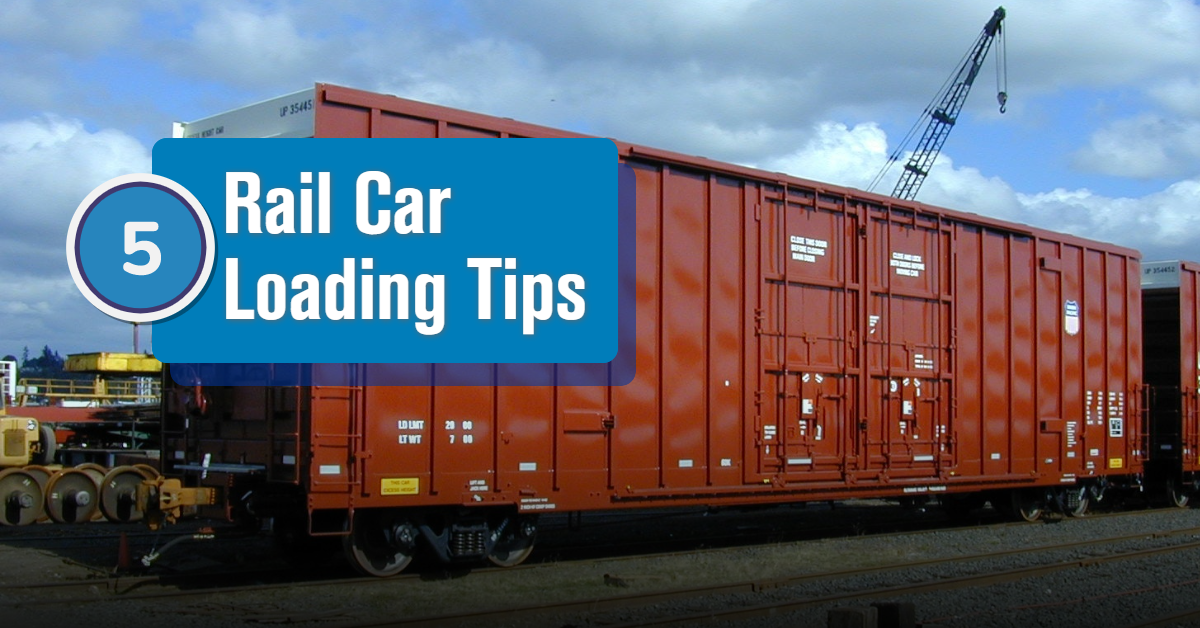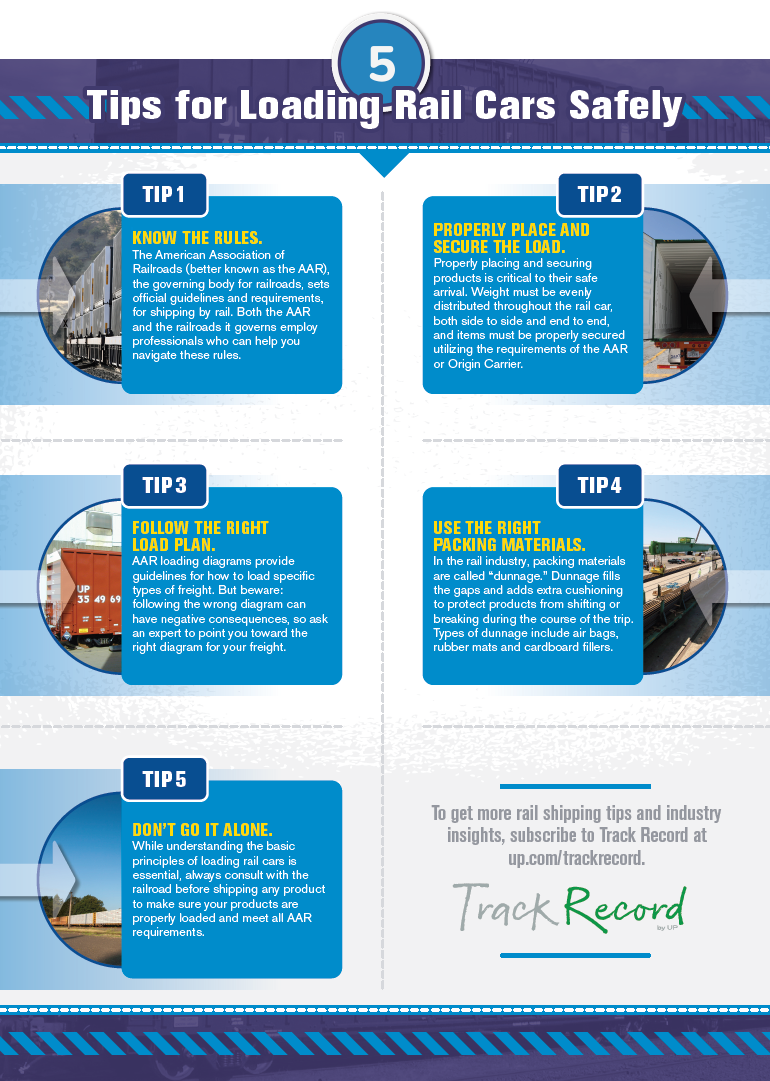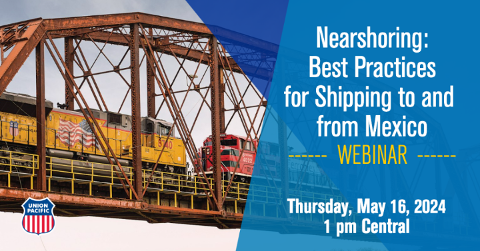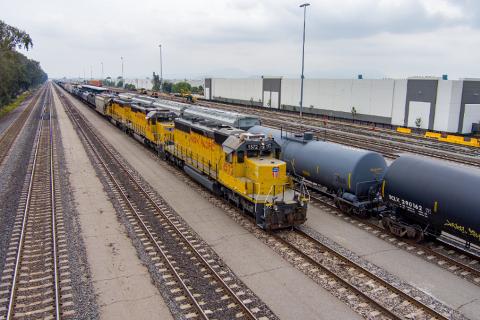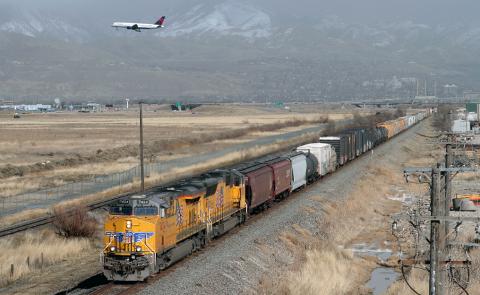When shipping freight by rail, you want to make sure your rail car shipments arrive safely at their destination with your products in excellent condition. Fortunately, loading rail cars properly can help make sure that happens. Follow these rail car loading basics to keep your rail shipments safe. Read to the end to see the "5 Tips for Loading Rail Cars Safely" infographic, or download a printer-friendly PDF here.
1. Consult the American Association of Railroads Rules
The American Association of Railroads (better known as the AAR) publishes official guidelines and requirements for shipping by rail. These are based on whether the rail car has an open top (like an open-top hopper) or a closed top (like a boxcar) or is considered “specially equipped” (like an autorack).
The AAR OTLR Library also allows shippers to search rules by commodity type.
If these rules seem daunting, both the AAR and railroads employ shipment quality professionals who are dedicated to helping rail shippers prevent freight damage. These individuals can provide resources and guidelines for safely packaging and shipping your freight.
2. Properly Place and Secure the Load
The way shippers place cargo in a rail car and secure the product is critical to their safe arrival. This comes down to two key principles:
- Properly distributing cargo weight. The weight of cargo must be evenly distributed throughout the rail car, both side to side and end to end.
- Securing cargo. Items must be properly secured in place or tied down so the load doesn’t spill, topple over or shift during transit.
These steps help prevent broken or damaged products. Following them is also a matter of safety: Failure to load a rail car correctly can cause unsafe conditions for the workers who unload the cars. Uneven cargo weight distribution can also damage the rail car and even cause unsafe conditions that could derail a train. Doing it right means you avoid costly delays, repairs and load adjustments — and your product arrives in mint condition.
Tip: Check out these videos to get simple tips for proper blocking and bracing for boxcars and intermodal containers.
3. Follow the Right Load Plan
In addition to loading rules, the AAR also provides loading diagrams. These guidelines detail how to load specific types of freight into rail cars. It’s important to use the loading diagram that corresponds with the type of freight you’re shipping, so be sure ask an expert to point you to the right one. To determine the optimal loading and securement for your shipment, we recommend starting with a load consultation.
4. Use the Right Packing Materials (Dunnage)
In the rail industry, packing materials are referred to as “dunnage.” Dunnage fills the gaps between products and adds extra cushioning to protect the product from shifting or breaking during the trip. Types of dunnage include air bags, rubber mats and cardboard fillers.
Just as the loading diagram will vary depending on the specific types of freight you’re shipping, so will the dunnage. Some vendors even specialize in designing custom dunnage. If you need to connect with a supplier, the AAR provides a list of approved vendors for dunnage and other supplies. Union Pacific Railroad offers this list, too.
5. Consult with Your Railroad
It’s important for shippers to understand these basic loading principles. But to truly do it right it’s important to have an expert on your side. Before shipping any product, always consult with the railroad to make sure your products are properly loaded and meet all AAR requirements. These experts do this day in and day out and can lighten the load of complying with the rules and ensuring shipments are properly loaded. For this reason, the railroad you’re working with should provide final approval of a load before it begins its journey.
Want to Learn More?
To learn more about proper rail car loading, contact one of our load consulting engineers. To learn more about shipping by rail, answer a few questions and an expert will be in touch.
Related Articles
- How to Clean and Inspect Rail Cars
- 12 Tips for Shipping Fresh, Refrigerated and Frozen Goods
- How to Keep Intermodal Shipments Safe
- Rail Shipper Tips: How to Prepare for and Recover from Hurricanes
- Winter Weather Preparedness Tips for Rail Shippers
- How to Ship Oversized Freight
- Which Reefer Unit Is the Best for Shipping Perishable and Frozen Goods?
- Shipping by Rail 101: FAQs Answered
- What Can You Ship by Rail?
- 12 Train Facts You Might Not Know
- Site Selection: 9 Points to Ponder Before Choosing Your Next Industrial Location
- How to Get Rail Service: Three Ways to Connect with Rail

